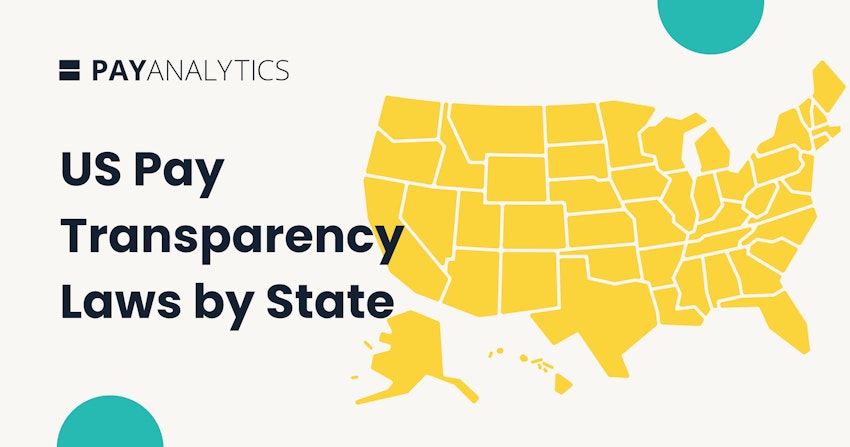Why read this guide?
Pay equity touches every part of your organization; it informs organizational thought and planning at all levels. It’s in the macro-level questions: What does justice mean to our organization? What are our responsibilities to our stakeholders? How do we make equitable compensation decisions in a rapidly changing job market? It’s also involved in routine tasks: Should this help wanted ad say “salary commensurate with experience”? What paperwork do we need to file to be compliant with pay equity laws?
Over the years, the PayAnalytics team has built a vast knowledge base to guide you through all facets of fair pay. This page will serve as an omnibus for that knowledge; it’s a comprehensive and growing overview to address your biggest questions about equal pay, pay disparities, regulations, compensation decisions, and even job classifications. Let’s get started.
What we cover in this guide
- What is pay equity and why is it important?
- What does “equal pay for work of equal value” mean?
- Pay equity vs. pay equality: What’s the difference?
- Why is a lack of pay equity in the workplace a problem?
- Where does the gender pay gap come from?
- Pay equity in the workplace
- Pay equity reporting requirements
- How global pay equity reporting requirements are changing
- Best practices for pay equity
- How to conduct a pay equity analysis
- What happens after a company achieves pay equity?
- How PayAnalytics helps you to close your pay gap
What is pay equity and why is it important?
Pay equity means that employees who provide work of equal value to the company are paid equally. It means that employees’ gender, race, national origin—and/or other demographic factors—do not influence compensation.
Pay equity is important because it motivates decisions that counteract the long-standing biases that have shaped today’s workplace. Historically, discrimination on the basis of race, gender, and color/ethnicity has created a legacy of pay disparities. This has caused material harm to members of social minority groups. Organizations that embrace pay equity play a leading role in righting these historic wrongs.
Pay equity also has practical benefits. Pay equity work not only allows companies to remain compliant with local regulations, but it also leads to greater success in recruiting and retaining good employees.
What does “equal pay for work of equal value” mean?
“Equal pay for work of equal value” is a key concept within pay equity. It means that if different job roles contribute the same value to the organization, employees in those roles should be paid equally. For example, say that customer service representatives (a job role usually filled by women) and maintenance workers (a job role usually filled by men) contribute the same value, even though the nature of their work differs. In that case, they should be paid the same. Applying an equal pay for work of equal value standard helps prevent employees in certain job roles from being underpaid based on gender or other characteristics.
Depending on the context, “equal pay for work of equal value” can also refer to a specific method for calculating the value of job roles in a pay equity analysis. Find out more about this in our article on pay gap types.
Pay equity vs. pay equality: What’s the difference?
Pay equity and pay equality are related but distinct concepts within the world of compensation in the workplace.
Pay equity is the idea that individuals should be compensated equitably (in other words, in a fair and impartial manner) for their work, regardless of gender, race, ethnicity, or any other irrelevant characteristic. This implies that people who perform the same job with the same level of skill, experience, and responsibility should be compensated equally, regardless of their individual characteristics.
Pay equality, on the other hand, is the principle that all employees should be paid the same wage or salary for the same job, irrespective of their skill level, experience, or any other factor that might distinguish them from their coworkers. This approach seeks to eliminate any disparities in pay that may result from personal factors, instead focusing solely on the requirements of the job.
Pay equity refers to ensuring that people are paid fairly based on their work and qualifications, whereas pay equality refers to ensuring that everyone is paid the same regardless of their performance or qualifications.
Why is a lack of pay equity in the workplace a problem?
Pay disparities harm some individuals, causing them to struggle and fall behind their better-paid peers. Individual economic hardship has ripple effects at the family, community, and macroeconomic levels. In addition, in an age when AI and algorithms are helping organizations make compensation decisions, biased decisions can beget more biased decisions. This means that pay inequalities can become self-perpetuating. A lack of attention to pay equity can also have material consequences for organizations. These range from reputational damage to undesirable employee attrition.
Where does the gender pay gap come from?
The causes for the unadjusted pay gap (or “gender pay gap”) are deeply rooted in society. Historically, women have been concentrated in certain industries and job types that have been undervalued. Many countries have implemented legislation to create an industry-wide shift in salaries to correct those historical undervaluations. Differences in work experience and education can also contribute to the pay gap; women are more likely to take time off for caregiving and may therefore have fewer years of work experience than their male peers.
Pay equity in the workplace
In many organizations, 50% of male workers are paid at or below what they would be expected to earn. The other 50% of male workers are paid more than expected. But about 65% of female workers are paid at or below expectations—and only about 35% are paid more than expected. In our experience, this is not intentional, but rather a result of more and less vocal approaches to initial and ongoing salary negotiations.
Pay equity in the workplace involves ensuring that all employees are fairly compensated for their work, regardless of their gender, race, ethnicity, age, disability, or any other factor unrelated to their job performance. This includes identifying and eliminating any opportunity differences that may prevent certain employees from advancing in their careers and earning the same as their colleagues.
Differences in access to training, development, and promotional opportunities can result in certain employees being unfairly disadvantaged in terms of career advancement and earning potential. Employers must take a proactive approach to identifying and addressing any barriers that may be preventing certain employees from advancing in their careers to address opportunity inequity.
Ensuring pay equity and eliminating opportunity inequity in the workplace requires a commitment to workplace fairness and transparency, as well as a willingness to identify and address any inequities in pay and career advancement practices. Implementing fair and transparent hiring and compensation practices, conducting regular pay and opportunity audits, and providing opportunities for employees to provide feedback and raise concerns about pay and career advancement practices can all contribute to this.
Promoting pay equity and eliminating opportunity inequity are critical components of creating a diverse, inclusive, and equitable workplace in which all employees have equal opportunities to succeed and thrive and be fairly compensated for their efforts.
Pay equity reporting requirements
Pay equity reporting requirements vary dramatically based on organization size, sector (public vs. private), and, most of all, location. For instance, some localities have national laws that specify that companies of a certain size must run annual pay equity audits. In some cases, these laws even specify the formulas that must be used. In other countries, reporting requirements may exist at the local level, or there may be none at all.
PayAnalytics is a global solution that is adaptable to any market. To support our customers in understanding local pay equity reporting requirements, we’ve compiled some specific guides for some of our most popular markets.
How global pay equity reporting requirements are changing
Globally, pay equity legislation is gaining momentum as an increasing number of nations recognize the significance of ensuring equitable compensation practices for all employees. Some key trends in global pay equity legislation include:
Increasing Transparency: Numerous nations are enacting laws requiring employers to report on their pay practices, including information about pay gaps and other metrics pertaining to pay equity, such as bonuses and benefits.
Strengthening Enforcement: Governments are increasing their efforts to enforce pay equity laws and implementing penalties for employers that do not comply. These include publicly publishing information on organizations' pay gaps—which poses a reputational risk—as well as six-figure penalties for noncompliance with pay equity, as in Spain.
Expanding Protected Classes: Pay equity laws are being expanded to include protections for additional variables, such as race, age, and disability. On a state-by-state basis, the United States has been enacting compensation legislation to protect these groups.
Focusing on Pay Transparency: In many U.S. states (including Maryland, California, and parts of New York, among others) and throughout the EU, new legislation requires employers to disclose salary ranges and pay scales, which aids in preventing pay discrimination and supports fair pay.
Promoting Pay Equity Audits: Some countries—such as Canada, Australia, Iceland, France, and parts of the U.S.—promote or mandate pay equity audits, which consist of a review of an organization's pay practices to identify and correct any disparities.
Overall, these trends indicate a growing awareness of the significance of pay equity and the need to address pay disparities and ensure that all employees are paid fairly.
Best practices for pay equity
The PayAnalytics team thinks about pay equity as a journey. Like most trips, an organization’s pay equity journey is highly individualized depending on your starting point, destination, number of travelers, and those travelers’ needs. In other words, an organization’s compensation decisionmaking will be influenced by its size, industry, geographic location, budget, job classifications, desired pay gap threshold, current and past demographics, history of pay equity action, and other factors.
Regardless of what the road map looks like for your organization, there are a few best practices for pay equity that hold true across the board.
- Know which pay equity laws apply to the region(s) where your country operates.
- Successful pay equity work begins with clarifying or developing an organizational pay structure that is based on objective criteria. This may require deep thought and conversations about what employee variables are important to the organization and how they play out in various job roles. In other words, how much does the company value factors like performance, seniority, experience, or age?
- Understand whether your organization should take a proactive or reactive approach to the pay gap. Is it necessary to achieve a zero pay gap, or is it more practical to set a tolerance range?
- Ongoing monitoring is essential. Even after a company declares the pay gap closed, it’s possible for it to reopen over time if compensation decisions are made without an eye on the data.
- Be mindful of broader equity issues. Measuring and closing the pay gap is an excellent start to your pay equity journey. However, it’s only one part of a bigger picture. Very often, women make less than men on average because they are not promoted at the same rate, especially into leadership roles. They may also face obstacles to following their ambition, such as a lack of flexibility to manage family obligations.
How to conduct a pay equity analysis
If you’re planning a pay equity analysis or simply want to know what to expect, check out this article on five steps to get started with pay equity for a basic overview of the process. Our founder, Dr. Margrét V. Bjarnadóttir, and Henrike von Platen of the Fair Pay Innovation Lab, have also broken it down for you in our Friday Coffee Talk.
If your organization is small, you may also want to read this article on pay equity analysis for small populations.
Note that you will also want to make sure that your analysis complies with any local requirements in your region. See the previous section on “Local pay equity reporting requirements.”
What happens after a company achieves pay equity?
Celebrate! Then maintain. Closing the pay gap is a tremendous accomplishment. However, equity in the workplace is a broad concept that goes beyond equity in pay only. Other forms of institutionalized bias may still exist. For instance, it’s possible for an organization to have pay equity, but not offer equal access to advancement or training opportunities. Such an environment could still create or perpetuate obstacles for women or members of minority groups to thrive and reach their full potential.
To make a workplace truly equitable in the fullest sense of the word, a strategy for diversity, equity, and inclusion (DEI) is paramount.
How PayAnalytics helps you to close your pay gap
We’ve designed PayAnalytics to help our customers stay on track with these best practices and keep their compensation systems fair, impartial, and unbiased. Our software is a global solution used in over 75 countries, currently available in seven languages. It’s adaptable to any national and local requirements. It provides insight into salary structures, with a graphical overview and drill-down capabilities, and calculates the financial impact of closing the pay gap (either fully or to a certain threshold). The platform supports ongoing data-driven decisionmaking to eliminate pay disparities and make sure the pay gap stays closed. And the Workplace Equity feature helps organizations move beyond equity in pay alone and analyze equity from a broader perspective.
Reach out to us or book a demo with one of our specialists to learn more about closing your pay gap today.





